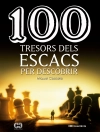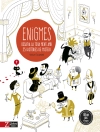Whether you are a novice or experienced pro, this easy-to-follow guide to designing board games is for you!
In Your Turn! The Guide to Great Tabletop Game Design, veteran game designer Scott Rogers—creator of tabletop games including Rayguns and Rocketships, Pantone the Game and ALIEN: Fate of the Nostromo—delivers a practical walkthrough to help YOU create over a half-dozen game prototypes, including dice, card, euro, miniature, and party games. The book is packed with easy-to-follow instructions, charming illustrations, and hands-on lessons based on the author’s proven knowledge and experience.
And once you’ve made your game, Your Turn! will teach you how to prepare, pitch and sell it whether through crowdfunding or a publisher. You’ll also learn how to:
- Write and create elegant and crystal-clear rules of play
- Playtest your games to improve quality, fix problems, and gather feedback
- Learn what players want and how to design for it
- Learn the secrets of the Six Zones of Play and why they are so important to your game design!
Your Turn! is the essential guide for practicing and aspiring tabletop game designers everywhere! Why wait to make the tabletop game of your dreams? Grab this book and prepare to take Your Turn!
Cuprins
Hi There! xxi
Chapter 1 Let’s Make a Board Game! 1
The Game Board 2
A Brief Note About Components 3
Getting Started 4
How to Make a Game Board 5
Let’s Make Improve the Game! 11
Change a Number 12
Change a Component 13
Change a Rule 15
Change the Theme: An Introduction to Theme and Genre 16
Chapter 2 Writing Rule Books Is Hard 21
The Problem with Rule Books 23
Problem #1: There Can Be Only One (Reader) 23
Problem #2: Front-End Information Overload 24
Problem #3: Rule Book Length 25
Problem #4: Edge Cases 26
Tricks to Writing Rule Books 27
Trick #1: Rules Are Stories 27
Trick #2: Use The Six Zones of Play 28
Trick #3: I Am Talking to “You” 34
Trick #4: Use Command Statements 34
Trick #5: Include Pictures 34
Trick #6: Add Callouts 35
What Every Good Rule Book Needs 36
Creating an Introduction 36
List of Components 37
Game Setup 38
The Goal of the Game 38
General Sequence of Play 40
Detailed Sequence of Play 47
End of Game 47
Everyone Deserves Credit 48
But Wait, There’s More 48
Say What? Translating the Rules 51
Chapter 3 The Chapter About Play Testing 53
The Great Worry 54
Let’s Start Starting 56
Is This a Thing? 56
Going Solo 59
Do It by Design 62
Gamers Game Games 63
Friends and Family 73
Blind Play Testing 73
Publisher Play Testing 74
Chapter 4 Let’s Make a Dice Game! 75
Dice Basics 75
Dice Mechanisms 78
Rolling 79
Rerolling 80
Dice Determine Movement 81
Dice Determine Combat Results 82
Dice Placement 82
Banking Dice 82
Dice for Targeting 83
Dice Builder 84
Concealing Dice 84
Dice Determine Actions 85
Dice Determine Resources 85
Dice of Different Colors 86
Combination Matching 87
Real-Time Rolling 87
Roll and Write 87
Dice Stacking 89
Dice Crafting 89
Dice as Counters 89
Dice as Units 90
Bluffing with Dice 90
Pop-O-Matic 91
Choosing the Right Dice Tools 91
It’s Probably Due to Probability 91
I Still Don’t Believe in Luck, But 96
Let’s Design a Dice Game 98
Step 1: Create the Rules 99
Step 2: Play Test the Game 100
Step 3: Change the Rules 100
Step 4: Change a Number 101
Step 5: Change the Objective 102
Step 6: Add a Mechanism 103
Step 7: Change the Theme 104
Creating Your Own Custom Dice 106
Dice Games to Play 106
Chapter 5 Let’s Make a Card Game! 109
Let’s Create a Card! 110
One Way to Make Cards 110
Another Way to Make Cards 111
Yet Another Way to Make a Card 112
Here’s One More Way to Make a Card 112
Even More Ways to Make a Card 113
Print and Play 113
Size Matters 115
Clear Cards 116
Pentagonal and Hexagonal Cards 117
Circular Cards 117
A Very Short History of Card Games 118
An Order of Sides 121
Card Mechanisms 125
Components 142
A Note About Probability and Cards 143
Let’s Design a Card Game 144
Step 1: Setting Up the Game 144
Step 2: Create the Rules 144
Step 3: Play Test the Game 145
Step 4: Change the Rules 146
Step 5: Change a Number 146
Step 6: Change the Objective 146
Step 7: Add a Mechanism 147
Step 8: Change the Theme 148
Let’s Share a Card Game! 149
10 Card Games to Play 150
Chapter 6 Let’s Make a Party Game 153
First Came Parlor Games 153
Then Came Party Games 154
There Are Only Four Types of Party Games 157
Traits of a Party Game 160
Trait 1: Keep It Simple 161
Trait 2: Few Components 161
Trait 3: No Theme Required 161
Trait 4: Accommodating the Players 162
Trait 5: Playable Anywhere 166
Trait 6: Interruptions Allowed 167
Trait 7: Scoring at a Party 168
Trait 8: Ageless 168
The Five Ps of Party Games 169
Permission 169
Predictability 170
Pace 171
Presentation 173
Props 175
The Sixth P Is for Player 176
Party Game Mechanisms 176
Knowledge 176
Word Play 177
Guessing 178
Memory 178
Acting 179
Drawing/Creating 180
Betting 181
Bluffing 183
Repetition 184
Movement 184
Observation 184
Judging 185
Let’s Make a Party Game 185
Step 1: Create the Rules 186
Step 2: Playtest the Game 186
Step 3: Change the Rules 187
Step 4: Change a Number 187
Step 5: Change the Objective 188
Step 6: Add a Mechanism 188
Step 7: Change the Theme 188
Ten Party Games to Play 190
Chapter 7 Let’s Make a Board Game 193
Board Games of Antiquity 194
Mancala 195
The Royal Game of Ur 196
Mehen 197
Senet 198
Nine Man’s Morris 199
Chess 199
Backgammon 200
Hnefatafl 201
Snakes and Ladders 201
Ancient Games Are Still Around 201
Types and Elements of Game Boards 202
Game Board Grids 203
Game Board Tracks 203
Game Board Spaces 204
Victory Tracks 206
Maps 207
Terrain 208
Abstraction and Symbolism 211
How to Make a Game Board 215
Understanding Abstract Games 216
Traits of an Abstract Game 218
The Concept of Elegance 219
Abstract Game Mechanisms 220
Word Game Mechanisms 221
Let’s Design an Abstract Game 224
Step 1: Create the Rules 227
Step 2: Playtest the Game 228
Step 3: Change the Rules 229
Step 4: Change a Number 230
Step 5: Change the Objective 230
Step 6: Add a Mechanism 231
Step 7: Change the Theme 231
The Mensa Select Award 232
10 Abstract Board Games You Need to Play 233
Chapter 8 Let’s Make a Euro-Style Strategy Game 235
A Short History of the “German Game” 235
The German Game Becomes the Euro-Game 238
Euro-Game Traits 239
Lack of “Luck” 240
Lack of Conflict 241
Loss 242
Emphasis on Construction/Growth 242
Exotic Settings 243
Lack of Theming 245
Goals 245
Balancing Mechanisms 246
Catch-up Mechanisms 246
Shorter Playing Time 247
Wood Components Rather Than Plastic 247
Crunchiness and Weightiness 248
Euro-Game Mechanisms 249
Action Points 249
Action/Role Selection 251
Arrangement 252
Auction/Bidding 252
Building 253
Bag-Builder 254
Buying/Market 255
Choosing 255
Cooperation 256
Engine-Builder 257
Income 257
Negotiation 258
Placement 258
Follow Action 262
Seeking Information 263
Set Collection 263
Trading/Deal-Making 264
Rondels 265
Victory Track 266
Gaming Is for Everyone 266
Color Blind Accessibility 266
Language Dependency 267
Character Diversity and Portrayal 267
Let’s Design a Euro-Game 267
Components of Riverside 268
Step 1: Create the Rules 271
Step 2: Playtest the Game 271
Step 3: Change the Rules 272
Step 4: Change a Number 273
Step 5: Change the Objective 273
Step 6: Add a Mechanism 274
Step 7: Change the Theme 276
Some Euro-Games to Play 277
Chapter 9 Let’s Make a Thematic Strategy Game 281
A History of Thematic Games 281
The Adventure Is Yours 284
Meanwhile Over in England 286
The Secret Origin of Ameritrash 287
Traits of Thematic Games 289
Intellectual Property 291
Any Theme Can Be a Game 293
Stories in Games 295
Players Have Wishes 297
Adding Drama and Conflict 298
Strategy vs Tactics 301
Unraveling Complexity 302
Bring on the Bling 305
Making Miniatures 309
Collectability 311
The Gimmick 312
Thematic Mechanisms 316
Variable Player Powers and Characters 316
Leveling 318
Upgrades 320
Crafting 321
Action Points 321
Action Selection 321
Movement 322
Take-That 323
Fighting and Combat 324
Player Death and Elimination 326
Area Control 327
Timer 328
Doom Track 328
Race 328
Deduction 329
Voting 332
Let’s Design a Thematic Game 332
Step 1: Creating the Game Board/Tiles 334
Step 2: Creating the Characters 339
Step 3: Creating the Denizens and Hit Tokens 340
Step 4: Creating the Dice 342
Step 5: Create the Rules 342
Step 6: Playtest the Game 344
Step 7: Change the Rules 344
Step 8: Change a Number 346
Step 9: Change the Objective 346
Step 10: Add a Mechanism 347
Step 11: Change the Theme 348
Some Thematic Games to Play 349
Chapter 10 Let’s Sell a Board Game 351
Why Sell Your Board Game? 351
First Things First 352
The Importance of Sell-Sheets 354
The Pitch Presentation 357
The Pitch Video 363
The Digital Solution 366
Playtesting Events 367
Selecting a Publisher 368
Meeting with Publishers 370
Contracts and Money 373
Licensing Your Game 373
Credit Where Credit Is Due 374
The Advance 374
Royalty Rate 375
Other Rights and Issues 376
Complimentary Copies 376
Rights Reversion 377
Media and Products 377
Always Be Selling 377
Self-Funding 378
Crowdfunding 379
Marketing 380
Previews 380
The Campaign 380
Add-ons and Stretch Goals 382
Production 383
Pricing 385
Shipping, Storing, and Distribution 386
Chapter 11 Let’s Do It All Over Again! 389
Starting with a Mechanism (or Two) 389
Starting with the Theme 390
Starting with a Story 391
Starting with the Title 391
Start with Components 392
Starting with the Player Count 392
Starting with a “Moment” 393
Starting with an Experience 393
Starting with the Publisher’s Need 394
Carrying a Sketchbook 394
Inspiration for Amateurs 394
Preventing Game Designer Burnout 395
One Last Bit of Advice 396
Appendix A Let’s Make a Game Prototyping Kit! 399
Appendix B Sell-Sheet Examples 403
Who’s Hue? 404
Dynamite Ridge Railroad 406
Castle Climbers 408
A Town Called Showdown 410
Index 413
Despre autor
Scott Rogers has been a professional game designer for thirty years. He has designed many tabletop games including Rayguns and Rocketships, Pantone: The Game, ALIEN: Fate of the Nostromo, and was featured in the 2020 documentary Gamemaster. He is the author of the best selling book Level Up! The Guide to Great Video Game Design. Scott has taught at USC and the New York Film Academy and now he’s ready to teach YOU!












